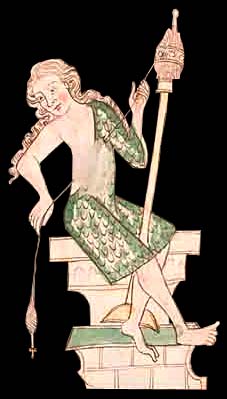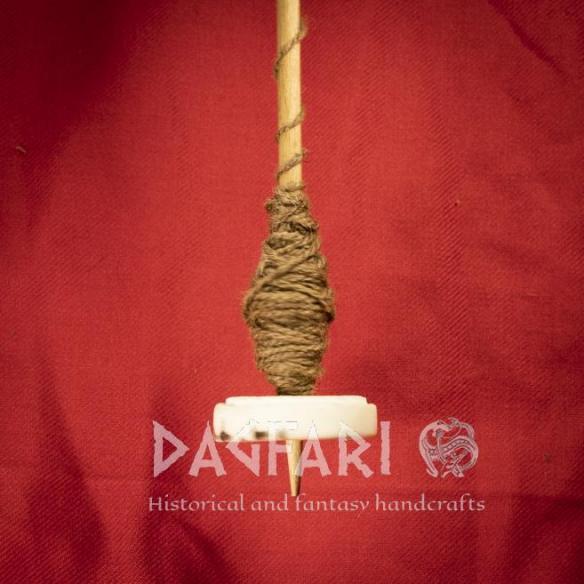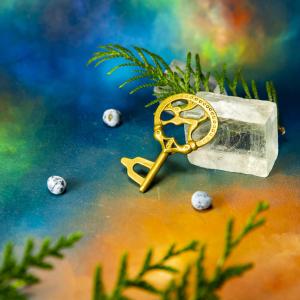Spindle i make by hand using historical techniques. I hand cut the antler, grind it, carve the ornament, paint it and then polish it.
Weaving and spinning have been part of women's work since the Stone Age. To give you an idea - in the famous archaeological site in Mikulčice, around 2,000 such spindles have been found! According to the appearance of the preserved spindles, one can guess whether they belonged to a wealthier or poorer woman. From these weaving spindles we find bone, antler, glass, stone and clay horsetails. The shapes are barrel-shaped, disc-shaped, bowl-shaped and spherical.
You can spin thread from both animal and vegetable fibres.
Setting aside decoration, the main importance of the spindle is stability and weight. After spinning, the spindles should spin as long as possible. their weight most often ranged between 3 - 30g
How does it all work?

A wooden stick - shaft (which I supply with the spindle) is mounted on the bottom of the spindle. This spins and acts as a rotating flywheel, winding the already finished thread from a tuft of worsted yarn - raw wool or flax fibers - usually held under the other hand or between the legs, like in a picture from the 14th century.
Spinning was a basic skill of a medieval woman. Add spinning to your kit.
The price includes a simple wooden rod.
Dimension is approx 6 cm in diameter, I cannot say in advance the weight and thickness of the material. I make them only on the basis of an order. So the delivery time can be up to 5 weeks (not every material is suitable for this horsetail and quite big). If you are guided by the weight of the replica, remember that the material is rotten in hundreds of years and what now weighs 20 g in a museum, has in real life from fresh material maybe 50 g.
So if you just want a beautifully decorated horsetail, simply place an order and I'll make it as soon as I get around to it. But you need to contact me for size and weight specifications. Thank you for your understanding.














